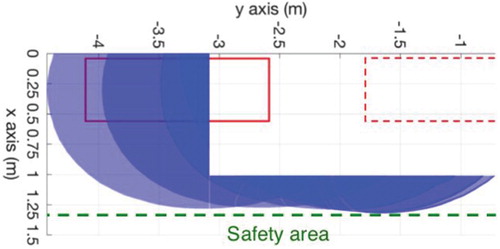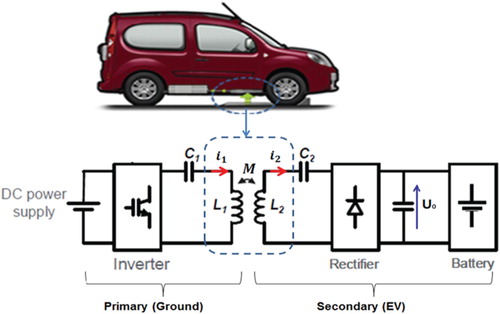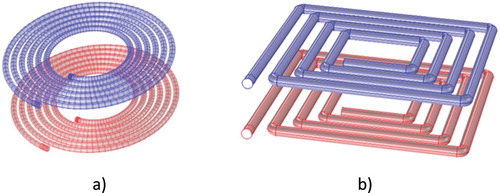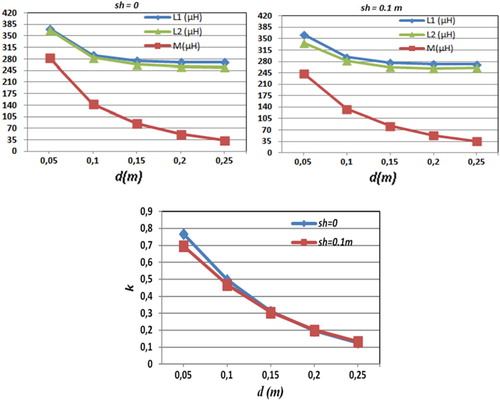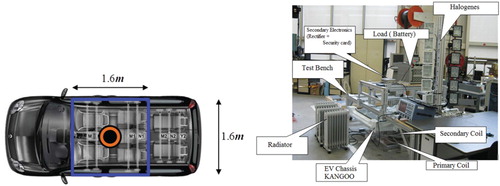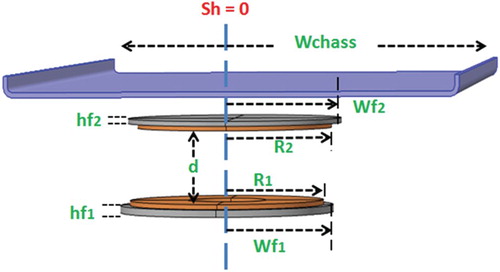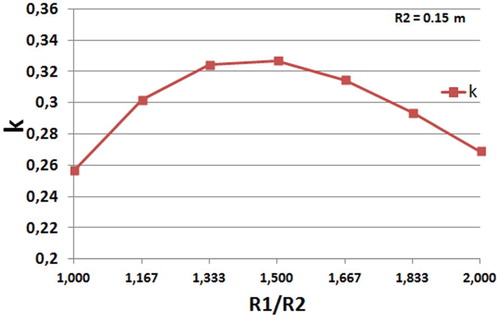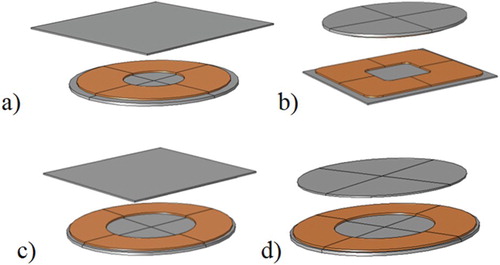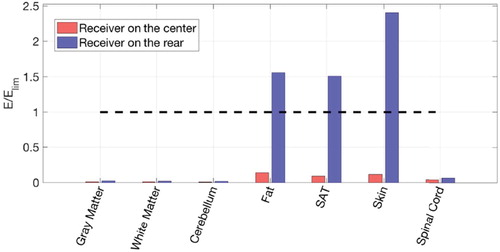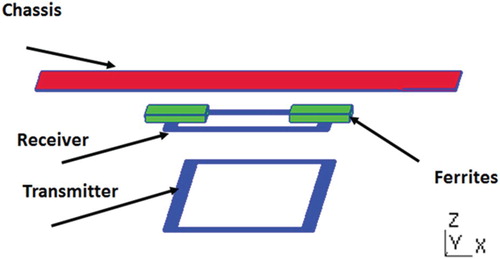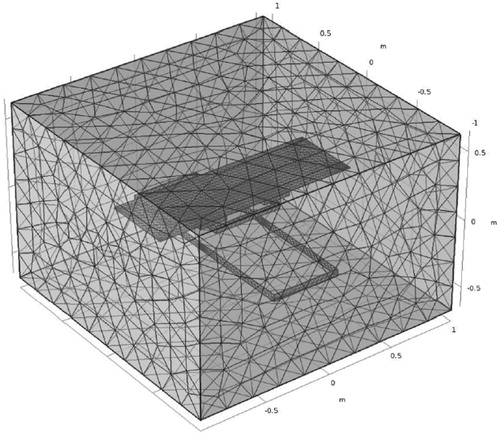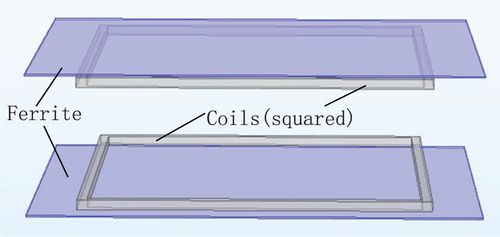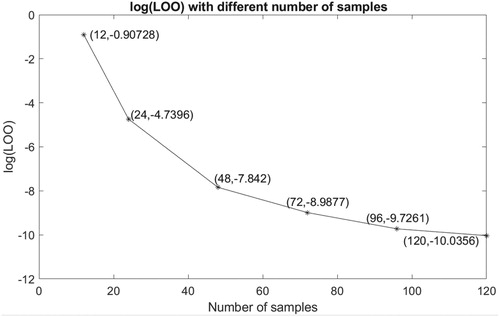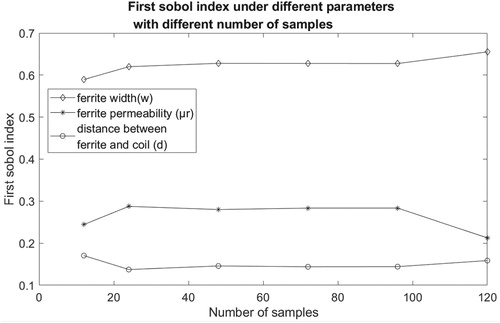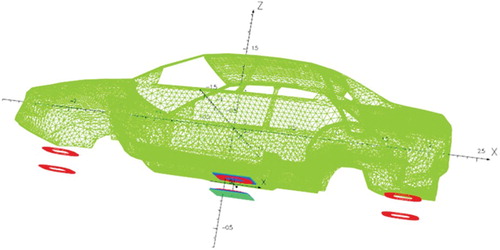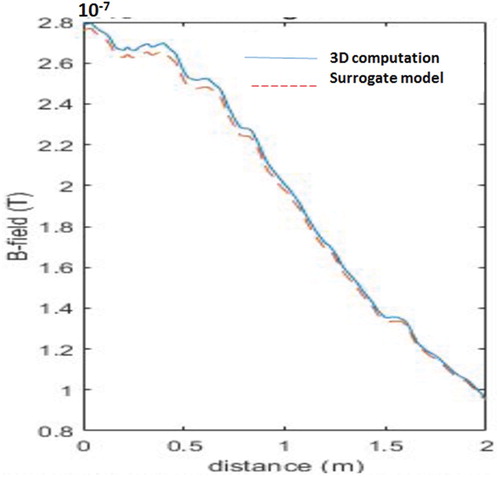Figures & data
Figure 3. Rectangular system covered by shield [Citation26].
![Figure 3. Rectangular system covered by shield [Citation26].](/cms/asset/2e64f16e-bd50-4f04-9942-d4fe2bf7cb4e/tewa_a_1799870_f0003_oc.jpg)
Figure 4. Finite element mesh of a typical circular inductive power system and computed distribution of magnetic flux density vectors (cut plane).

Figure 5. 3D structure with shielding, chassis and measurement positions (stars) for the magnetic field measures.
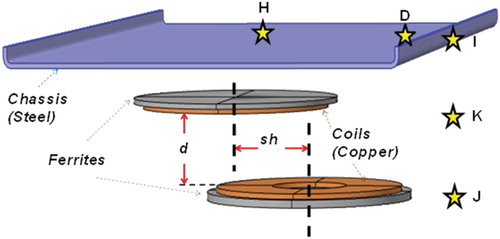
Table 1. Magnitude of the magnetic induction.
Table 2. Power pad specifications.
Figure 11. Values of for different prototypes as a function of the air gap distance d(m): (a) sh = 0 and (b) sh = 0.1 m.

Figure 12. Values of for different prototypes in function of air gap distance d(m): (a) sh = 0 and (b) sh = 0.1 m.

Figure 13. Values of for different prototypes in function of air gap distance d(m): (a) sh = 0, (b) sh = 0.1 m.

Figure 14. Values of for different prototypes in function of air gap distance d(m): (a) sh = 0 and (b) sh = 0.1 m.

Figure 15. Comparison of relative difference of the coupling factor for two groups of reference prototype: (a) : RNO-RNO and (b)
: NTC-NTC.
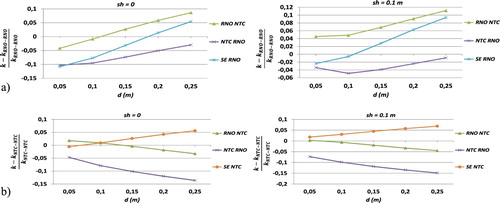
Figure 16. Comparison of values of levels of interoperability prototypes (a) simulation results normalized to test ones and (b) tests results normalized to 6.25 µT.

Table 3. 
 level values for different prototypes.
level values for different prototypes.
Figure 18. Distribution of induced EMFs inside the human body for the studied configuration. (a) Normalized magnetic flux density B (T); (b) normalized E-field (V/m).

Figure 20. Boundary of the volumes having magnetic flux density higher than the reference level of 27 µT and position of the Duke model for the exposure assessment (blue: receiver on the rear, red: receiver on the center).
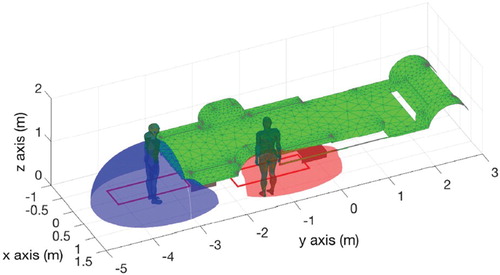
Figure 22. Definition of the safety area. Different volumes where the limit of B is exceeded in blue. Transmitters in red. The dashed one represents the subsequent not active transmitter. The dashed green line represents the border of the safety area.
